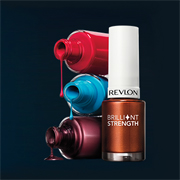Revlon has re-entered the professional beauty business with its acquisition of Colomer for $660 million—13 years after it initially sold this same business to CVC Capital Partners for $315 million—a move which returns the Revlon Professional business back “home”. The 2000 sale was part of a plan to help Revlon reduce debt and return to profitability, a plan that appears to be finally yielding benefits. In the years following the divestiture, Revlon continued to suffer from steep profit losses, a revolving door in top leadership, and various facility closures. Whittling its portfolio down to practically just the notoriously competitive mass color cosmetics business contributed to this scenario, as did its reliance on its #1 customer: penny-pinching Walmart. Recent history paints a brighter picture for the cosmetic giant. After a full decade of profit losses (1998 to 2007), the company has now recorded five consecutive years of profit gains (2008 to 2012), a trend that is continuing in 2013. A healthy product pipeline, and consistent ad support harking to the brand’s ‘boldly glamorous‘ roots in spite of the many restructuring and efficiency measures, have helped Revlon regain financial strength. The news comes a couple years after the 2011 announcement by CVC that it wished to find a buyer and after shopping the business around – and a reported hodgepodge of near deals – Colomer has finally landed with a familiar owner. The move will help diversify and strengthen Revlon’s business in several ways:
- By channel. The acquisition minimizes Revlon’s reliance on mass channels and vaults the company into the ninth ranked spot in the $12 billion professional hair care market, according to Kline’s Salon Hair Care report series. Perhaps most importantly is its gain of the CND professional nail business and its runaway success, Shellac. As reported in Kline’s Professional Nail Care report, this industry has enjoyed near 30% growth over the last several years, and CND, the pioneer behind the gel manicure movement, ranks second
- By category. The deal helps diminish Revlon’s dependence on the color cosmetics sector by leaning more towards the adjacent hair care market in a meaningful way. According to Kline’s latest Cosmetics & Toiletries study, hair care accounts for 19% of U.S. beauty sales and is the second largest product class behind skin care
- By geography. To a lesser extent, the move will help strengthen Revlon’s business outside of the U.S., namely within Europe where Colomer has a strong presence.
- By consumer. By adding the American Crew and Crème of Nature franchises to its portfolio, Revlon will gain a foothold in the male grooming and multicultural markets, respectively.
This marks the third recent acquisition from Revlon; it acquired Sinful Colors in 2011 and Bari Cosmetics in 2012, although both were much smaller transactions and kept Revlon limited to the mass makeup market. This much more expensive acquisition offers greater opportunity for diversification and signals Revlon’s return as a serious contender in the personal care industry. With the uncertainty of ownership over, the inherent stability afforded by this acquisition should now allow the Colomer brands to focus purely on business performance and market share enhancement rather than salability.

